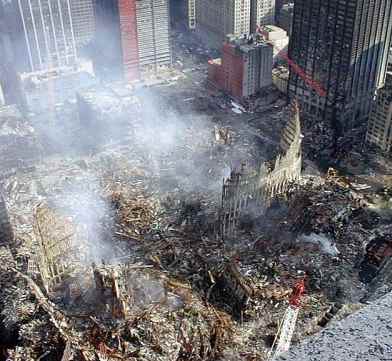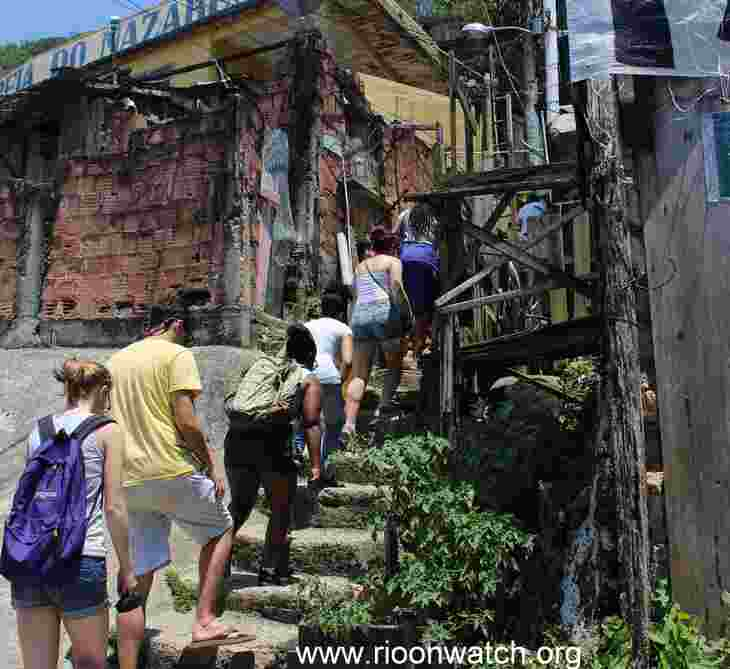Tina
Amirtha is a freelance writer based in Amsterdam. She writes
about science and technology in the global marketplace, with
a bent towards women in STEM. Her writing appears in Fast
Company, Quartz, and ZDNet, among other
places. Follow her on Twitter @tinamirtha or visit her at www.tinaamirtha.com.
The
fascination of the abomination.
Joseph Conrad
In
2012, as New Orleans was still recovering from the tumult of
Hurricane Katrina, residents and politicians did something surprising
in a city that was eager to draw visitors again: they began
fighting tour bus operators with protests and parking tickets.
On
an hourly basis, tour buses were bringing gawking out-of-towners
into the Lower Ninth Ward, where the hurricane had inflicted
its worst destruction. Locals were tired of their suffering
being the subject of tour-goers’ leisure activities, but
the tourists were curious about the hurricane’s effects
and enticed by a fully guided experience.
Today,
ten years after the hurricane destroyed large swaths of the
city and displaced millions of residents, local leaders have
sought to commemorate the disaster with official events and
memorials. And despite local resistance, hurricane bus tours
still exist: the “Hurricane Katrina Tour – America’s
Greatest Catastrophe” bus tour has 110 reviews on TripAdvisor.
Nearly half of the reviews have Excellent ratings.
These
kinds of tours of places linked to death, disaster, atrocity,
or ongoing socio-political conflict have not only rankled locals:
they have begun to earn the attention of academics, who have
grouped them underneath the label of ‘dark tourism.’
While the scope of the dark tourism industry is difficult to
quantify—many of these sites don’t formally offer
commercial tours, gift shops, or other goods and services—researchers
agree that the number of dark tourists is rising globally, alongside
tourism generally: Last year, according to the World Tourism
Organization, slightly over 1.1 billion tourists traveled internationally,
51 million more than a year earlier.
It’s
not just a New Orleans phenomenon. Tourists regularly visit
places that have experienced suffering and loss. Instagram documents
 visitors’
tours of Auschwitz, selfie sticks in hand. Israeli tourists
gather at a viewpoint in Golan Heights to watch Syrian rebels
and loyalists fight through a pair of binoculars. Last month,
a travel journalist in Tokyo launched Dark Tourism,
a quarterly magazine whose first issue includes a story about
a leprosy sanatorium on a remote section of Japan’s Honshu
island, as well as thought pieces on whether the Fukushima nuclear
plant should become a tourist center and how to truly define
dark tourism.
visitors’
tours of Auschwitz, selfie sticks in hand. Israeli tourists
gather at a viewpoint in Golan Heights to watch Syrian rebels
and loyalists fight through a pair of binoculars. Last month,
a travel journalist in Tokyo launched Dark Tourism,
a quarterly magazine whose first issue includes a story about
a leprosy sanatorium on a remote section of Japan’s Honshu
island, as well as thought pieces on whether the Fukushima nuclear
plant should become a tourist center and how to truly define
dark tourism.
The
question of why people tour these locales has brought together
sociologists, geographers and others, who often begin their
research with a central focus: where is the line that separates
commemoration, celebration, and voyeurism?
“This
is where critical approaches and critical social theories can
give more insight into why people travel to these places and
why locals want to entice people to these places,” says
Dorina Buda, an assistant professor of cultural geography at
the University of Groningen, and author of the book Affective
Tourism: Dark Routes in Conflict. “What’s probably
even more important than the motivation part are the emotions
that people feel in these places.”
Conventional
wisdom says wherever there is political or social unrest, tourism
doesn’t exist. But the thoughtful study of these regions
reveals that tourism is happening there. In the case of the
West Bank, a focal point of Buda’s current research, dark
tourism helps local tourists recognize and reflect upon their
plight, she says. Foreigners are drawn to the area for its religious
significance. Yet two tourism researchers, Gregory Ashworth
and Rudi Hartmann, argue that any visit to a site that has experienced
tragedy and atrocity is motivated by curiosity, empathy, and
horror.
In
a 2011 paper titled “The Role of Horror and Dread in the
Sacred Experience,” two Australian researchers use the
sociologist Robert Hertz’s theories on death to explain
the motivation and polarizing emotions tourists feel when traveling
to dark places. Under Hertz’s sociological framework,
a person begins to reconcile a paradox when he or she confronts
death; death signals both an enduring loss and a finite transition.
Dark tourism not only becomes a vehicle for paying respect but
also a means for overcoming negative feelings about the dark
place. The dark voyage is akin to an emotional negotiation process.
The
term ‘dark tourism’ emerged in 1996 when the Journal
of Heritage Studies published a work by two hospitality
management professors, John Lennon and Malcolm Foley. In their
book Dark Tourism (2000), Lennon and Foley trace the
practice back to tourism related to the sinking of the Titanic:
The 1958 and 1997 Titanic movies inspired lay interest in retrieving
artifacts from the ship and attending related exhibitions.
Another
1996 paper by the tourism researcher Anthony Seaton sparked
academic interest in what he called thanatourism, the practice
of traveling to any place where death has occurred, regardless
of whether the deaths occurred in living memory. Still other terms are used to describe the nuances of dark tourism:
horror, terror, ghost, cemetery, grief, prison, holocaust, ruin
battlefield and genocide tourism.
Still other terms are used to describe the nuances of dark tourism:
horror, terror, ghost, cemetery, grief, prison, holocaust, ruin
battlefield and genocide tourism.
Hurricane
Katrina is just one of a number of tragedies being commemorated
this year. In September, the $26 million Flight 93 National
Memorial museum opened in Shanksville, Pennsylvania, where thousands
of visitors have come to visit the crash site since 2001. And
this year marks 70 years since the end of World War II. London
walking tour companies are commemorating the 75th anniversary
of the German Blitzkrieg, also in September, while local bars
will throw their annual Blitz Party.
“Commemorations
are something that we’re supposed to do as a society,”
says Buda. “Cemeteries, monuments, museums, places of
battles, places where a disaster happened, are always imbued
with an aura of patriotic or historic significance. And these
national narratives are reinterpreted through a certain lens
of perpetual movement, invading history, travel and tourism.”
Tourism, she says, is a way of recreating memories and “re-managing”
history.
Not
everyone experiences dark tourism the same way. Tourists may
feel patriotism or fascination with a disaster site, while friends
and families of victims who are still processing their trauma
come to these sites to mourn and to confront other difficult
emotions.
“I
didn’t find peace when I first came, back in 2001,”
said Gordon W. Felt, president of the Families of Flight 93
in a New York Times interview. “Now, when I come
back to the memorial, I’m much more at peace. Not to say
that the emotions aren’t raw. Not to say that I still
don’t harbor anger.”
The
study of tourism in general is relatively young: its academic
roots can be traced to 1980s, when a pair of University of Calgary
tourism researchers, Jafar Jafari and Brent Ritchie, laid down
a framework for tourism education. In the United States, there
are schools of tourism and hospitality that train students in
tourism marketing and management (The World Travel & Tourism
Council estimates that the global industry contributes $7.6
trillion in revenues to global GDP every year, and is growing
at over 3 percent, faster than the world economy). But tourism
is still not a serious academic endeavor at top research institutions,
leaving its darker sides largely unexplored.
“Because
what is tourism? You’re going from point A to point B,
and you’re sipping margaritas on the beach,” Buda
said.
She
and other researchers aim to upturn this thinking. A project
at the University of Central Lancashire called the Dark Tourism
Institute, of which Buda is not a member, encourages dark scholars
to design new research approaches that could ultimately enhance
traditional academic disciplines, rather than reuse the critical
thinking tools of established social science areas. Two professors
of tourism, Philip Stone and Richard Sharpley, started it in
2012 as a place for gathering research partners and producing
original research.
This
year, a group of American and Canadian researchers proposed
a novel dark tourism model: Dystopian Dark Tourism, or DDT for
short. The DDT theoretical model analyzes dark tourism in relation
to the concept of dystopia, the portrayal of death in the culture,
and the visitor’s insecurity and other emotions. A visitor’s
sadistic impulses may influence her decision to travel to a
dark place, for instance, and traveling in groups makes her
feel more secure in the face of terror or death. “This
insecurity stems from the prospect of a ystopian world-utopianism
gone awry,” the researchers write.
Some
of the literature on dark tourism argues that the rise of film,
television and printed media’s influence within the last
century is the major driver of individuals’ preoccupation
with death and violence. Consequently, the researchers suggest
that as people become more insecure about death and society’s
relationship to violence, they become more interested in utopian
and dystopian phenomena on a global scale. Seeing the physical
artifacts of destruction and suffering allows tourists “to
confront insecurity about death and society.”
Researchers
agree that making dark sites entertaining crosses an ethical
line and can be insensitive to those who have suffered there,
as evidenced by the reaction of residents in the Lower Ninth
Ward. But if the tourism stays within educational limits, and
any resulting financial transaction directly benefits the site,
then dark tourism can be a positive force in the lucrative tourism
industry. Some tour bus operators have claimed to donate a portion
of their revenues to redeveloping New Orleans. Even Katrina’s
official commemoration events included “Resilience Tours”
by land, air, or water, a sure sign that city officials value
tourism of its most vulnerable areas as a bread-nd-butter industry.
But evidence proving the economic impact of dark tourism is
not readily available—a problem that researchers like
Stone and Sharpley aim to address.
The
appeal of dark tourism however has led at least one researcher
to begin capitalizing on it: Philip Stone of the Dark Tourism
Institute charges the media a GBP 65 ($100) fee for personal
interviews. Tourism, no matter how well embraced by academics—and
no matter how dark—will always be a commercial institution.
This
article originally appeared at Motherboard